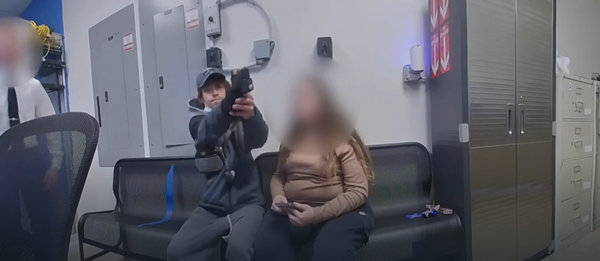
The world of shogi, the traditional Japanese board game with some similarities to chess, has entered the age of rivalry. The eight major titles are currently held by eight different shogi players. Such a similar situation in which no single person held multiple titles last occurred 31 years ago. How did this age of rivalry come about? What sorts of developments can be expected in the future? We asked three top shogi players for their analyses.
Nobody holds multiple titles

It would not be surprising if this year's fifth and final match of the Kisei title series, which took place on July 17 at the Toshi Center Hotel in Chiyoda Ward, Tokyo, is one day considered a turning point in the history of shogi title matches (see below).
Yoshiharu Habu, 47, the highest level ninth-dan player and Ryuo and Kisei title holder at the time, was aiming to capture his 100th career title with a victory, while eighth-dan player Masayuki Toyoshima, 28, was seeking his first title in his fifth attempt. Was the "Age of Habu" going to continue or would an "Age of Rivals" arrive? The much-anticipated match was won decisively by Toyoshima and the eight major titles were separated.
The last time no player held multiple titles was in October to November 1987, when there were seven major titles.
"Until a few decades ago, we were in a period when Makoto Nakahara [16th Lifetime Meijin] and Kunio Yonenaga [who earned the Kisei lifetime honor for the Eisei title] were competing for the top spot. [Ninth-dan player] Koji Tanigawa became famous overnight. Ninth-dan players who turned professional in 1980 [55th year of the Showa era], including Michio Takahashi, Osamu Nakamura and Yasuaki Tsukada, emerged as the 'Year 55 Group,'" recalls Taku Morishita, 52, a ninth-dan player.
"In terms of generational change, the current situation is very similar to how it was back then, but the mainstays have more of a presence now."
Of the titleholders, two are in their 40s, three are in their 30s, and three are in their 20s. In this current time of rivalry among players there is a more pronounced parity between the generations than in 1987, when there were two in their 40s and five in their 20s.
Highway to success
How did the age of rivalry come about?
"The impact of artificial intelligence is huge," points out ninth-dan player Daisuke Suzuki, 44, a specialist in the Furibisha Ranging Rook opening. "As research using shogi software has become widespread, shogi players, especially in the young generation, can improve their skills more readily. 'An expressway' has been created to get better to a certain extent."
However, this road does not continue endlessly.
"There seems to be congestion toward the end of the road," he said.
According to Suzuki, in the past, five or six top players vied for titles, but congestion has formed because the leading group is made up of roughly 20 to 30 players who range from newcomers to veterans.
Suzuki also singled out "the existence of seventh-dan player Sota Fujii." Fujii, 16, holds records such as a 29-match winning streak and the youngest person to win a professional shogi tournament, among other spectacular achievements. He has roused the young players in the Kanto region who feared that their time would never come.
Fujii's match in the second round of the Ryuo tournament final against sixth-dan player Yasuhiro Masuda, 20, featured a symbolic occurrence. "The brilliant move of 'black' 9, 5 Kaku" by Masuda, Suzuki said. The Kaku piece, similar to the bishop in chess, was moved diagonally two squares to the ninth column, fifth row (see diagram). "From this move of sacrificing the Kaku to drive the opponent's Ryuo [promoted rook that moves like a rook in chess combined with the moves of a king] to the edge [of the board], it was almost as if I could hear Masuda's mind screaming, 'I cannot defeat Fujii unless I make moves that are this good.'"
Both the advancement of AI and the emergence of a young genius have resulted in changes in the power relationships in the world of shogi.
Momentum for Toyoshima
How long will this age of rivalry last? "Each generation is deep," said Yasumitsu Sato, president of the Japan Shogi Association. "It will be difficult to unify the titles."
At the moment, players aiming for titles can be classified under five general categories. The "veterans in their 40s" with the Habu Generation (see below) as central figures, the "players in their 30s" who are said to be in their prime as shogi players, the "Kansai region group" comprised mainly of players in their late 20s, the "young Kanto region players" growing remarkably, and "Fujii," who only turned 16 on July 19.
"Toyoshima, the Kisei title holder, has momentum. He is among the title contenders in all matches and is most likely to obtain multiple titles," Sato said, adding that Masuda and seventh-dan player Takuya Nagase are also among the promising players to watch. "But I cannot even imagine what will happen and who will be breakthrough players."
The age of rivalry in 1987 ended after a month. Habu, who turned professional in 1985, emerged during that time and in 1989 won his first title, the Ryuo, which he currently holds. Will Fujii, who made his debut two years before the current age of rivalry, be able to replicate Habu's unstoppable pace? Suzuki looks ahead with optimism.
"Players already speak among themselves, 'It will be tough to defeat Fujii in best-of-five or best-of-seven matches.' Who will serve as an obstacle for him when he advances to title matches? Will it be Habu or Toyoshima? It is fun to think about."
(From The Yomiuri Shimbun, July 21, 2018)
-- Shogi title matches
These are especially important matches among the Japan Shogi Association's official tournaments. Generally, all shogi players participate, and there are conditions such as title holders playing a series of games against challengers who win through preliminary rounds. Currently, there are eight titles: Ryuo, Meijin, Eio, Oi, Oza, Kio, Osho and Kisei.
-- Habu Generation
In the world of shogi, strong players who are from the same generation as Yoshiharu Habu, who was born in 1970, such as highest ranked ninth-dan players Yasumitsu Sato, born in 1969, Toshiyuki Moriuchi, Takeshi Fujii and Tadahisa Maruyama, all born in 1970, and Masataka Goda, born in 1971, are collectively referred to as the Habu Generation.
Read more from The Japan News at https://japannews.yomiuri.co.jp/







